27-inch FHD VA curved panel with 240 Hz, Adaptive-Sync, and wide-gamut color.
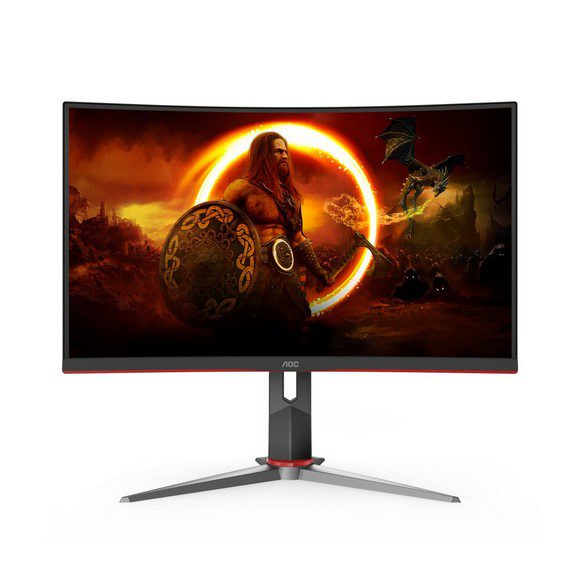
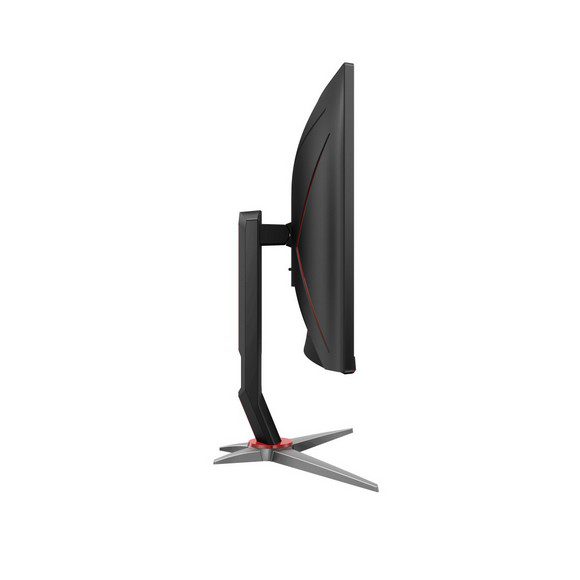
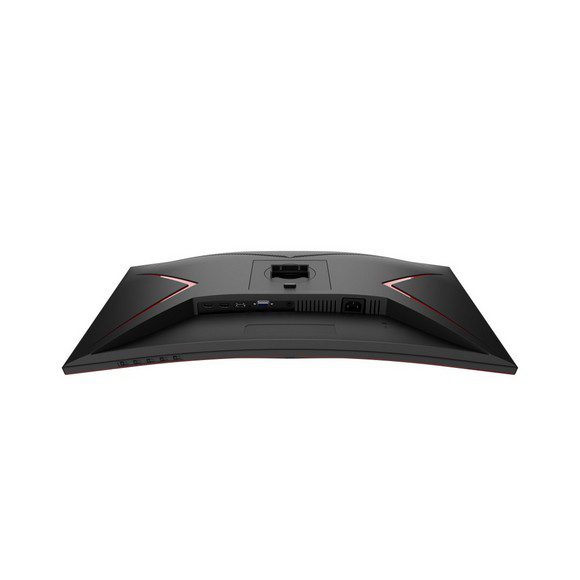
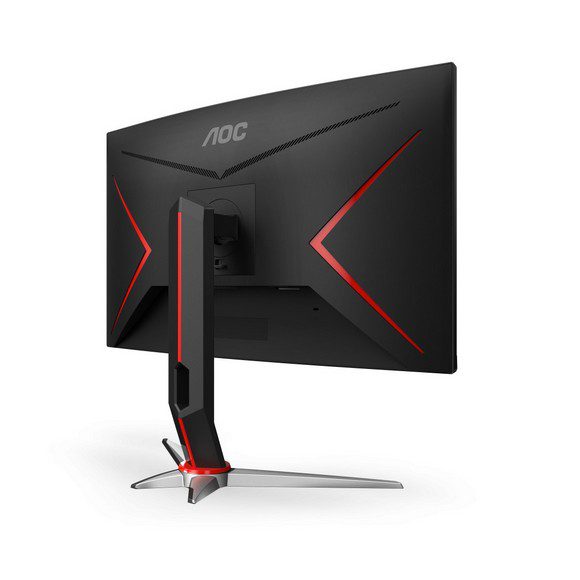
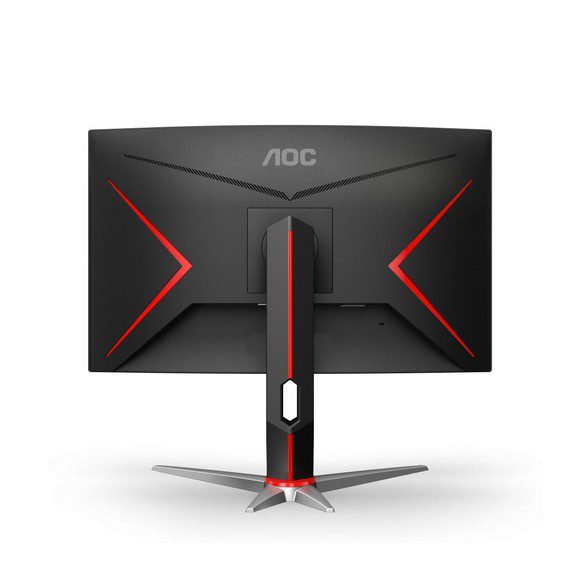
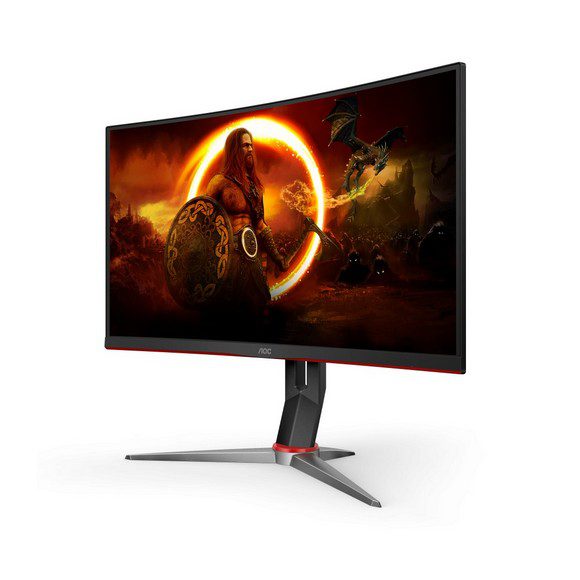
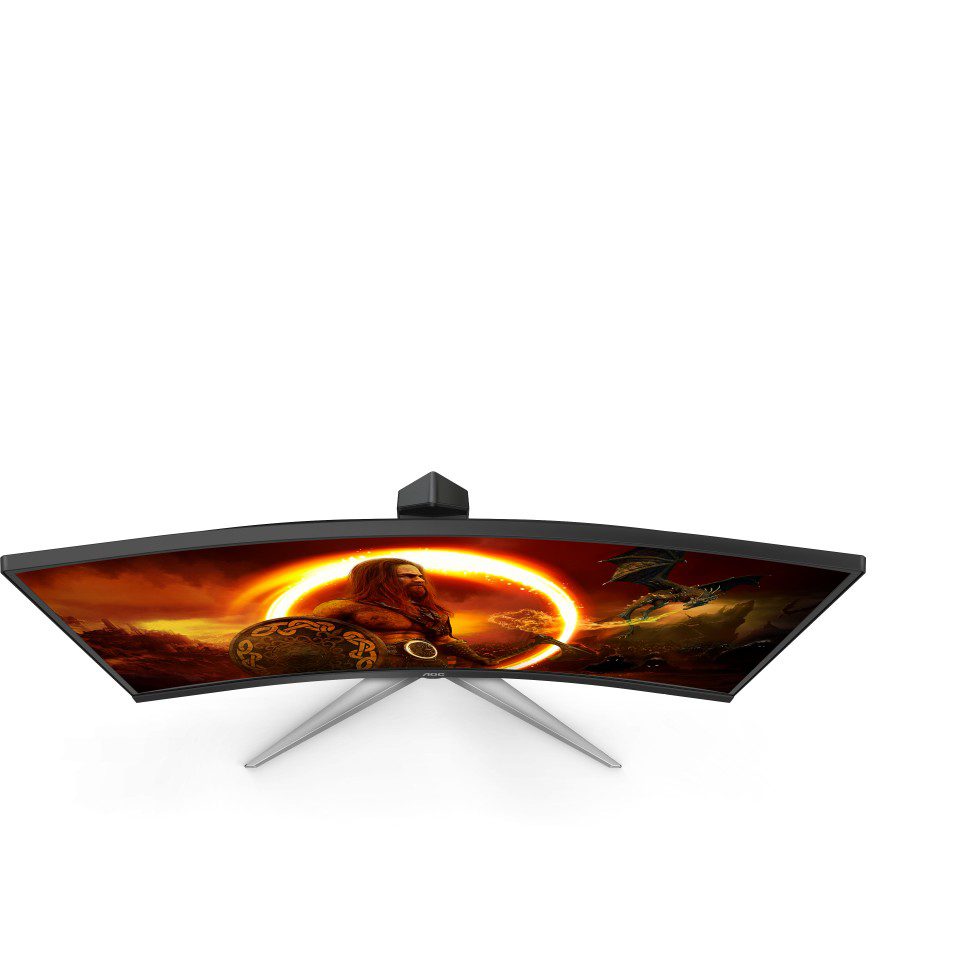
Two HDMI 2.0 connectors and a DisplayPort 1.2 are located on the input panel. All will operate at FHD resolution and 240 Hz, but DisplayPort is required for G-Sync. All three inputs are supported by FreeSync. There is a 3.5mm audio jack available for powered speakers or headphones. There are neither USB ports nor built-in speakers.
The five control key symbols may be seen molded into the little white power LED in the lower right if you look closely. When reaching for the key that activates the OSD, I unintentionally switched the display off a few times. One toggles power. Quick access to input selection, game mode, and the aiming point is provided by the first three buttons.
OSD Features
The OSD ribbon at the bottom of the screen is opened by pressing the fourth control key on the C27G2Z. The AOC menu is the same one I’ve seen for the past ten years; it is quite simple to use, albeit a little awkward to traverse using buttons. I prefer using a joystick.

Seven visual modes are available in the Luminance menu, each of which corresponds to a distinct activity. Because it allows users access to all other visual and gaming options, standard is the default and optimal mode. Three gamma presets, dynamic contrast, and HDR emulation options are also available here. There are three choices that share a similar appearance but add various degrees of edge augmentation. Since the C27G2Z already has outstanding contrast, their imitation of HDR is just OK, but I didn’t think they improved the image—only changed the way it looked. There isn’t any real HDR support in this.
AOC monitors are the only ones with Picture Boost. It enables you to designate a bright area on the screen that is movable and adjustable in size. You can change the brightness and contrast of it to make it stand out from the surroundings. It’s an excellent technique to draw attention to a graphic or specific aspect of a game environment.
If you don’t like the OSD’s default placement in the bottom center of the screen, it can be relocated around the screen. The volume toggle and DP version selection are also found in this menu.
There are six more visual styles for various game kinds under the Game Setting. My recommendation is to omit that to prevent confusion. It’s simple to get lost in the settings if you combine Eco and Game modes. There is also a three-level overdrive available, but I found it to operate too coarsely. No environment was free of black or white ghosting artifacts. The Adaptive-Sync toggle and a frame rate counter are also available from this menu. A motion blur reduction slider appears when Adaptive-Sync is disabled. This backlit strobe has 20 different brightness settings. Darker levels further minimize blur, however after level 10, the phasing effect that is characteristic of this feature is too obtrusive. I advise disabling this and continuing to use Adaptive-Sync.
AOC C27G2Z Calibration Settings
| Eco Mode | Standard (Game Mode Off) |
| Brightness 200 nits | 81 |
| Brightness 120 nits | 39 |
| Brightness 100 nits | 28 |
| Brightness 80 nits | 17 (min. 51 nits) |
| Contrast | 47 |
| Gamma | 1 |
| Color Temp User | Red 49, Green 52, Blue 51 |
Gaming and Hands-on
I’ll start by getting the resolution issue resolved. The largest FHD display I would want to use is 27 inches, however the C27G2Z’s 82ppi is sufficient for both work and play. Even in highly detailed photos, you won’t be able to discern the pixel structure unless you sat less than two feet from the screen. The panel’s astounding contrast, which is over 3,200:1, aids in clarity in this case.
I used the C27G2Z both before and after calibration and discovered that the few modifications needed are worthwhile. The image appears fine right out of the box, yes. However, the calibrated image is marginally superior.
The C27G2Z performs admirably when viewed in the context of a cheap gaming monitor. It has the reasonably smooth motion that one would anticipate from a 240 Hz panel and is fast and responsive. I couldn’t tell whether there was any input latency with my average abilities. A 360 Hz monitor or a 240 Hz QHD model can be advantageous for a highly skilled player. The FHD resolution being used here, though, makes it simple to sustain frame rates. To get 240 frames per second, you won’t need a high-end video card.
Due to the superior contrast and wide color gamut of the C27G2Z, picture quality is of the highest caliber. With or without calibration, accuracy was evident since everything appeared accurate and natural. Deep blacks are used to create detailed shadows, and I saw dazzling highlights that heightened the impression of depth. Doom Eternal had excellent clarity and fine detail. The overdrive artifacts I saw in test patterns were less noticeable when playing. I advise staying away from the HDR emulation modes. They just serve to obstruct clarity by adding a distracting amount of edge enhancement.
In terms of gaming monitors, the C27G2Z offers a little bit more speed and performance than a 165 Hz display with the same resolution. Priced below 27-inch QHD monitors, it will undoubtedly satisfy gamers looking for value.
